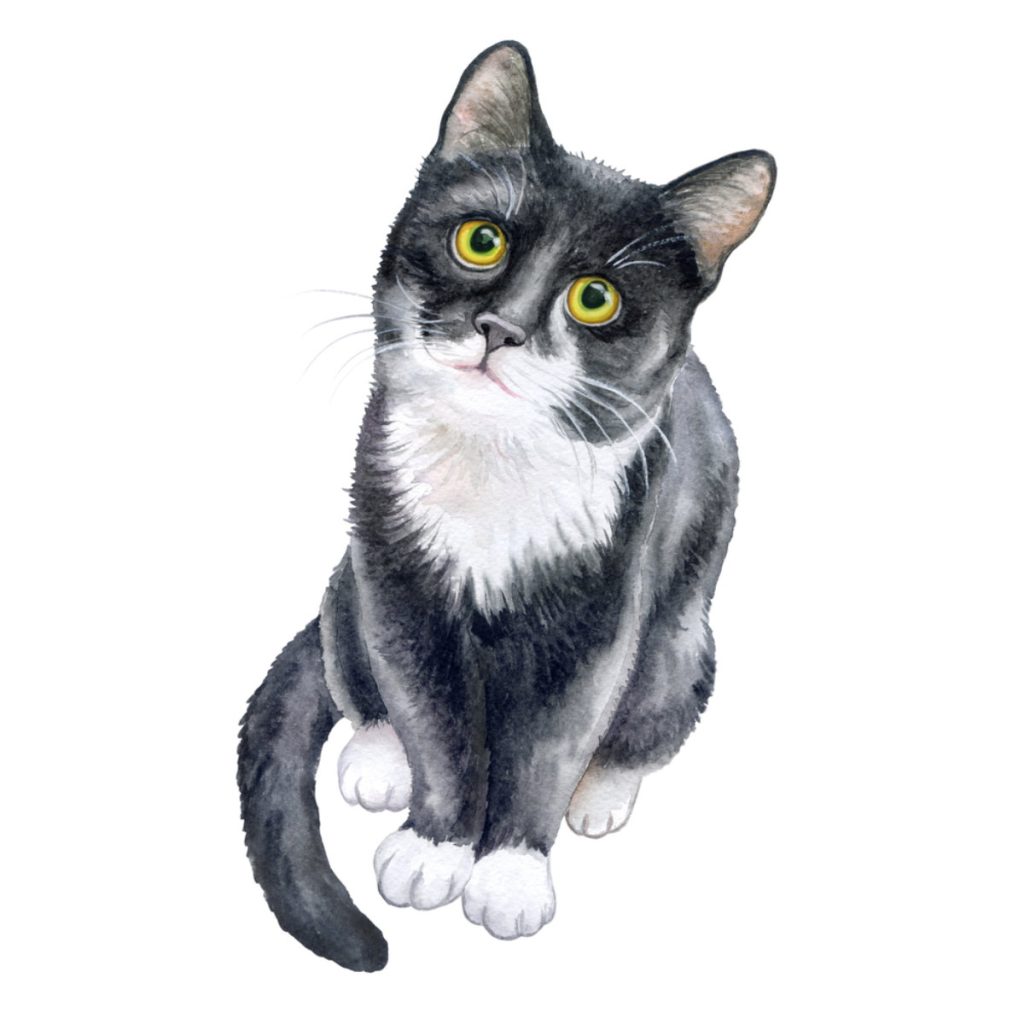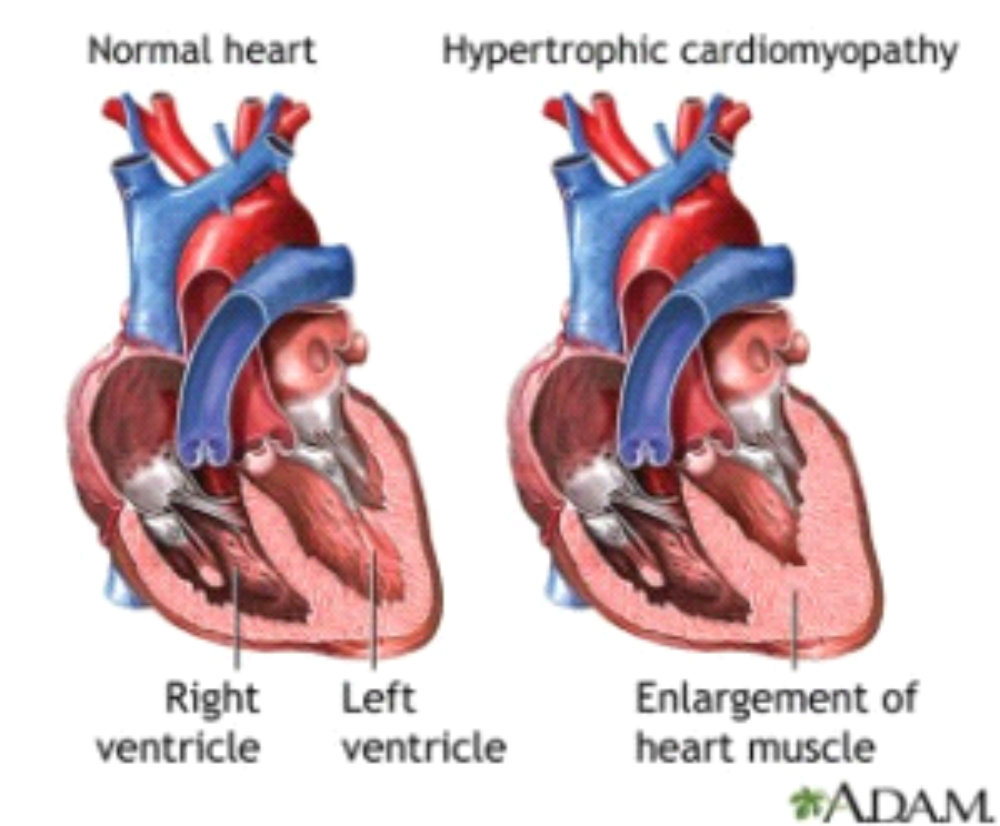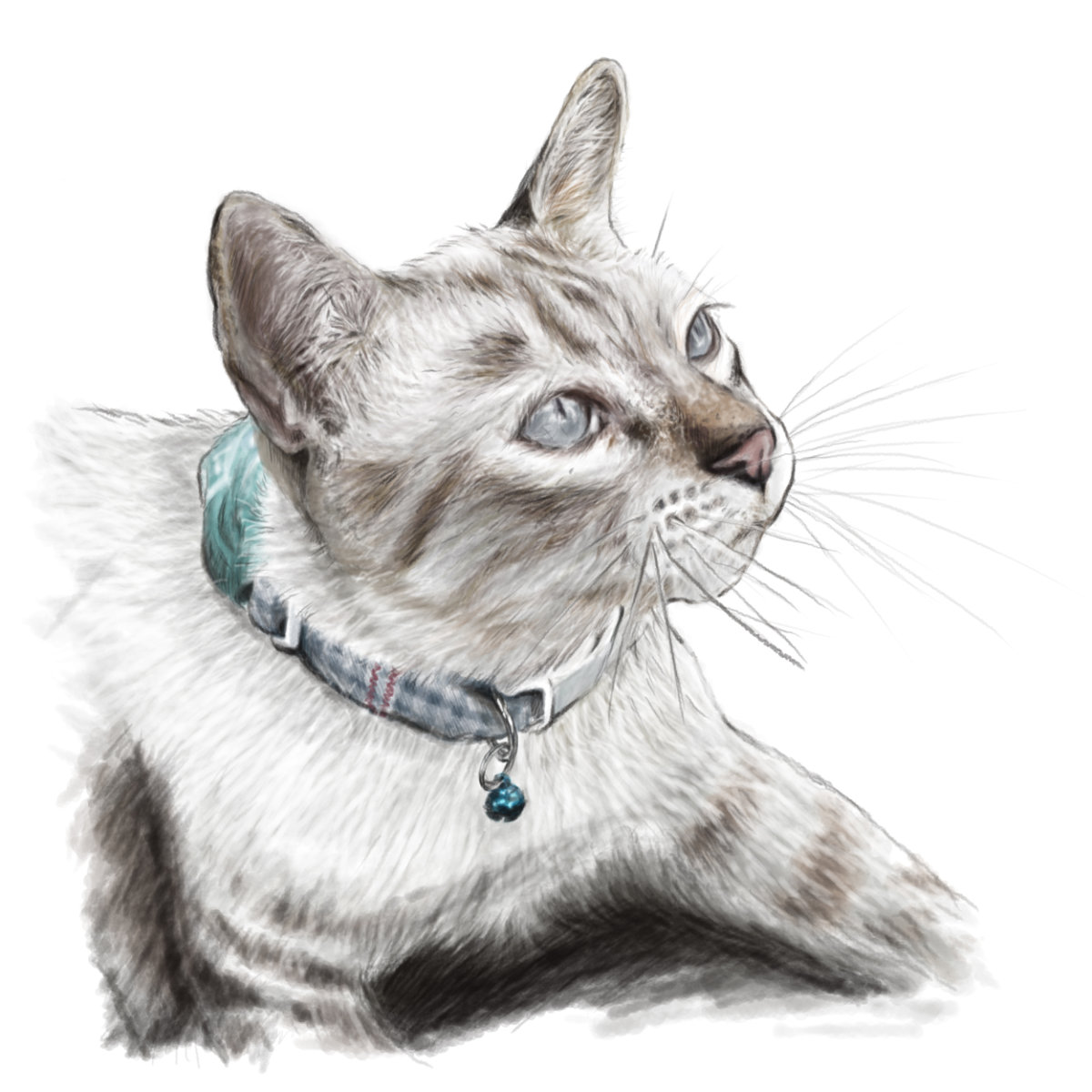Hypertrophic cardiomyopathy (HCM) in cats
There are different types of heart disease (cardiomyopathy) in cats, of which HCM is the most common. HCM is a disease where the muscles of the left ventricle become thicker (hypertrophy). The main problem this causes is that the left ventricle can no longer fill up with the same volume of blood as before, creating more stress on the heart to pump the same amount of blood around the body.
This condition appears to be inherited in some breeds- including the Sphynx, British Shorthair, Maine Coon and Ragdoll. However, HCM is not limited to these breeds and can be commonly diagnosed in domestic cats of any breed.


How does the heart work?
The heart is divided into 4 chambers. The top two chambers are called atria (singular: atrium) and the bottom two chambers are called ventricles. Blood is carried back from the body into the right atrium and then into the right ventricle. The right ventricle pumps blood to the lungs where oxygen enters the bloodstream. The blood then returns to the heart and enters the left atrium, and goes into the left ventricle where it is then pumped to the rest of the body. There is a major valve between the atria and ventricles on either side of the heart- the mitral valve on the left and tricuspid valve on the right, which prevent the backflow of blood.
What clinical signs are associated with HCM?
Most cats that are affected with HCM do not appear to show any outward clinical signs during the early stages of the disease. Oftentimes a heart murmur picked up during a routine clinical examination is one of the earliest clinical signs. In late stages of the disease, the cat may present with signs of congestive heart failure e.g. lethargy, difficulty breathing or rapid breathing, open-mouthed breathing, or a distended abdomen.
One of the unfortunate complications of the disease is the formation of blood clots in the heart (aortic thromboembolism). When this happens, a piece of the clot may break off and lodge in the vessels supplying blood to the hind legs, which cuts off the blood supply to the hind legs causing acute pain. In severe cases it can result in hind limb paralysis.
Sudden death has also been reported as a complication, though this is rare.
What tests are recommended for further investigation?
As an initial step, we would recommend doing a full blood profile including measuring the thyroid level to look for concurrent conditions such as hyperthyroidism, which can also cause cardiomyopathy. Also, check your cat’s blood pressure. We may recommend running a pro-BNP test and chest radiographs to look for heart enlargement, and an ultrasound examination of the heart (echocardiogram) to measure the internal structure of the heart and valves.

What should I look out for at home?
One way you can monitor your cat’s heart condition is by counting the sleeping respiratory rate (SRR). This is done by counting the number of breaths your cat takes while asleep; normally this should be below 30 breaths/minute. The Cardalis app (available now on Apple and Android devices) can assist with counting the SRR. The results can be emailed to us to help your vet track how your cat is responding to the medications.
Other signs of congestive heart failure include:
- Laboured or rapid breathing
- Increased coughing
- Anorexia
- Restlessness
- Abdominal distension
- Sudden collapse
If you notice any of these signs, or if your cat’s SRR exceeds 30 breaths/minute please contact us immediately.

